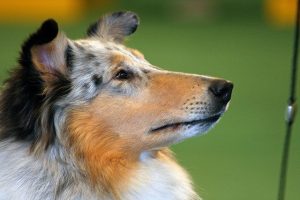Stem cell research is a subject of fierce controversy, simply because the most versatile cells can only be derived from embryos. However, scientists have found a way to utilize stem cells found in our own bodies, and have proven this method to be effective in animals. The Vet-Stem Regenerative Veterinary Medicine in San Diego, California has spent the past twenty years developing a successful stem cell treatment for animals.
past twenty years developing a successful stem cell treatment for animals.
CEO and founder Robert Harmon reports treating over 3,000 horses, many with joint problems. A racehorse, “Be A Bono”, had bone chips and fluid build-up in his knees that were threatening to end his prize-winning, racing career – as well his life. “Be A Bono” was able to return to the racetrack after receiving stem cell treatment. It has also been proven successful in the treatment of dogs.
How Does Stem Cell Treatment Work for Dogs?
When a dog does not respond well to typical medication for arthritis or hip dysplasia, and the dog is in relatively good health, stem cell treatment may be the answer. Collecting fat cells from the dog’s body is the first step in their stem cell treatment. The regenerative cells that are collected do three things:
- Release chemicals that help decrease inflammation
- Send out chemicals to the body to bring healing cells into that area
- Provide potential for regenerating damaged tissue – nearly reproducing tissue
Keep in mind – these are not synthetic cells that are being replaced in dogs. These cells are the dog’s own natural healing cells, making it less likely for any kind of rejection or poor interaction and yielding fewer, if any, side effects. A dog undergoes general anesthesia to remove approximately 30 grams of fat cells from the abdomen. The fat cells are isolated and then re-injected back into the arthritic area, such as the hips, in a greater concentration than the body could accomplish on its own. The speed of improvement is often amazing, usually within 48 hours.
When it comes to spinal injuries and treatments, scientists are cautiously optimistic about the results they are seeing using a special cell to regenerate damaged parts in dog’s spines. The hope is that this procedure will play a future role in treating human patients with similar spinal injuries. The unique cells, known as ensheathing cells (OEC), have the capacity to support nerve fiber growth that preserves a pathway between the nose and the brain.
Studies have shown that these OEC cells can serve as a bridge, linking damaged and undamaged tissues in the spinal cord. The journal Brain published a study that included 34 dogs, all suffering from critical spinal cord injuries. The dogs could not use their legs and were not able to feel pain in their hind legs at all or feel anything in the adjoining areas. Many of the dogs were dachshunds that are extremely prone to this type of injury.
One group received OEC’s from the lining of their nose that were injected into the injured area. The other group was injected with the liquid in which the cells were transplanted. The group that received the OEC injections had significant improvements over the other group. They were able to move their legs and coordinate movement with their front quarters. In these particular dogs, neuronal messages were being relayed across formerly damaged part of their spinal cord. The new nerve connections causing this recovery were happening over shorter distances within the spinal cord, not the longer distances that need the brain to connect with the spinal cord. Some dogs regained their bowel and bladder control.
It’s very exciting to see that transplanting these types of cell into a severely damaged spinal cord can bring about such improvement. It is a wonderful example of outstanding collaboration between veterinary and regenerative medicine researchers and scientists with excellent outcomes. The potential for healing of both man and his best friend are endless.
Photo: Courtesy of Kjunstorm via Flickr (CC by 2.0)









